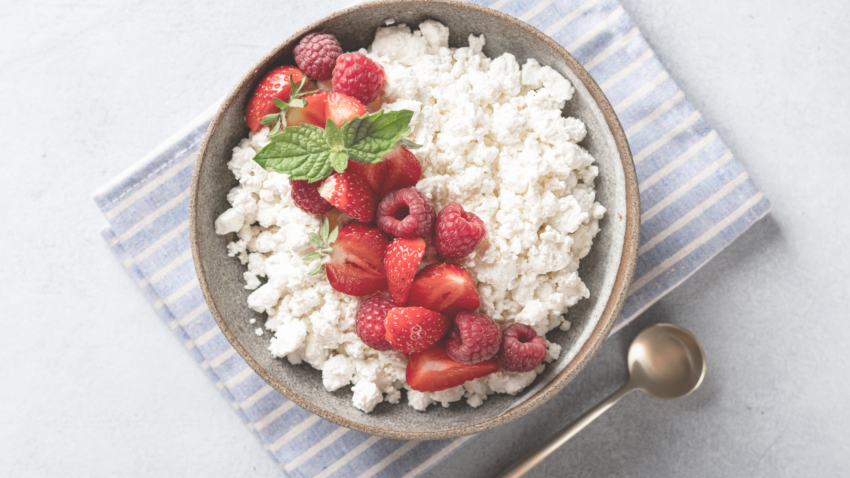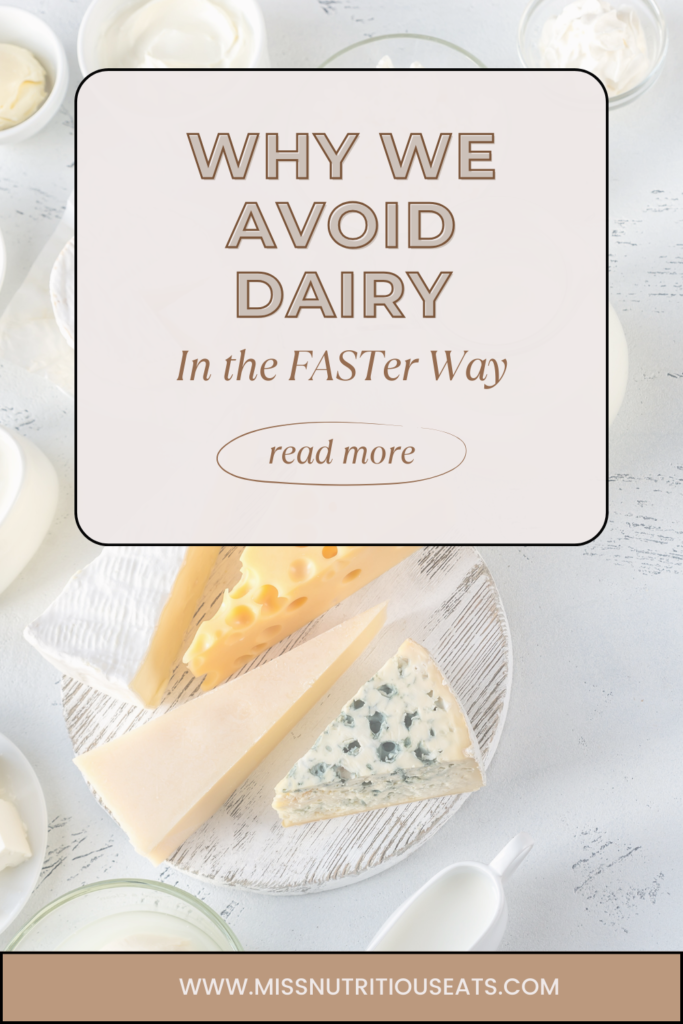Nutrition Benefits of cottage cheese for good health

Move over Greek yogurt, cottage cheese is having a moment. You could even say it’s the darling of the diary aisle! The truth is, it’s a super versatile healthy food that offers a creamy texture and a bunch of protein to keep you full and satisfied. This soft, fresh cheese is characterized by its mild flavor and unique texture of small to large curds. It’s also a staple food for health-conscious people aiming for a balanced diet. Its high protein content, rich calcium levels, and low fat make it a go-to choice for anyone looking to maintain or achieve a healthy weight, enhance muscle growth, and support overall health. Bonus, you can find it in nearly any grocery store!
Table of contents
Nutritional Highlights of Cottage Cheese
A half-cup serving of low-fat cottage cheese packs a significant nutrition with approximately 90 calories, 12 grams of protein, and modest amounts of fat— 2.5 grams.
Calcium:
Calciumplays an important role not just in maintaining strong and healthy bones as we age, but it’s also vital for proper muscle functions and nerve transmissions. It’s like giving your body the building blocks it needs to stay strong and functional.
Phosphorus:
Phosphorus is another hero found in cottage cheese, which works hand-in-hand with calcium to bolster bone health. It’s also critical in repairing cells and tissues — kind of like your body’s natural maintenance team keeping everything in tip-top shape.
Potassium:
Potassium is another star nutrient, acting to help balance fluids in your body and support heart health by regulating blood pressure. Imagine it as a behind-the-scenes operator making sure everything runs smoothly, from your heartbeat to how your muscles contract.
Vitamin B12:
B12 is essential for creating red blood cells and maintaining brain health—a real brain booster that keeps your memory sharp and your mood stable.
Protein:
Cottage cheese is a high-protein food. It’s unique composition of its protein, predominantly casein, offers slower digestion, which aids in satiety and muscle recovery post-exercise. One cup of cottage cheese has nearly 25g protein!
Probiotics:
Some brands are a good source of live active cultures that support gut health. Just be sure to read labels and ingredients lists to see if a significant amount are included.
If you’re managing conditions such as lactose intolerance or high blood pressure, opting for low-sodium varieties and considering the lower lactose content in cottage cheese compared to other dairy products can be beneficial.

Choosing the Right Cottage Cheese for a Healthy Diet:
When it comes to picking the perfect cottage cheese, think of it like selecting the best Greek yogurt – aim for options without added sugar, particularly found in flavored varieties. It’s a simple switch that keeps your meals both delicious and health-oriented.
Sodium Levels to Watch For:
Pay close attention to sodium levels if you’re monitoring your blood pressure. Many cottage cheeses on the market tend to be high in sodium. A 1/2 cup serving of cottage cheese has about 356 mg of sodium. But don’t worry, there are ‘reduced sodium’ or ‘no salt added’ varieties available to keep your intake in check. The American Heart Association suggests a sodium limit of 1,500–2,300 milligrams daily for most adults, with an ideal goal of 1,500 milligrams or less for individuals managing high blood pressure.
The Fat Content Dilemma:
Dairy products, including cottage cheese, come in no-fat, low-fat, and full-fat versions. Your choice should align with your health objectives. If you’re looking for something that feels more indulgent and satisfies your hunger, full-fat cottage cheese might just hit the spot due to its rich flavor and texture.
Quality Is Key:
Top-notch cottage cheese should boast a short and sweet list of ingredients, highlighting the quality of the dairy used. At the end of the day, however, the best choice for you might simply come down to the flavors and ingredients that you and your family prefer. And that’s perfectly fine!
Does the size of the curd matter?
Not really…
Small Curd Cottage Cheese presents a smoother, creamier consistency, making it almost melt in your mouth. Its more homogeneous texture is preferable for those who enjoy a subtle taste profile or when a dish requires a silkier cheese component.
Large Curd Cottage Cheese, on the other hand, is all about the experience of texture and taste. The larger, chewier curds provide a more pronounced mouthfeel, often described as rich and satisfying.

Quick ways to add Cottage Cheese to your diet
Morning Boost: Break your fast with a serving of low-fat or nonfat cottage cheese alongside fresh fruit or whole-grain toast for a balanced breakfast.
Healthy Alternative: Use it as a substitute for sour cream or ricotta cheese in dips, spreads, and baking to reduce saturated fat while increasing protein (similar to how you may use greek yogurt.
Protein Rich Pasta: Mix cottage cheese into your favorite pasta sauce for a creamy sauce option.
Post-Workout Snack: Blend cottage cheese into smoothies for a creamy texture and protein boost.
Protein-Rich Salads: Create nourishing salads by adding cottage cheese for a satisfying and nutritious meal.
Savory Options: Enhance your lasagnas, casseroles, and stuffed shells with cottage cheese for a calcium-packed twist.
Dessert: Blend plain cottage cheese into the social media favorite- ice cream!
For more ideas check out this post for 30 high protein meal ideas that star cottage cheese.
Cottage Cheese: A Smart Choice for Healthy Living
From aiding in blood sugar control with its low carbohydrate content to providing a good source of selenium, important for heart disease prevention and muscle growth, cottage cheese integrates well into any healthy eating plan.
Considering the U.S. Department of Agriculture’s dietary guidelines, incorporating low-calorie, high-protein foods like cottage cheese into your diet supports weight loss and healthy weight management without compromising on taste or nutrition. Whether opting for traditional cottage cheese with its distinctive large curds or preferring the smoother texture of small curds in low-fat options, there’s a variety to suit every palate and dietary need.
Why do we avoid dairy in the FASTer Way to Fat Loss?
I want to address the elephant in the room. In the FASTer Way, my 6 week weight loss program, we avoid both gluten and dairy. We do this for a few reasons including reducing inflammation, improving gut health, and promoting weight loss. But I know that for many of you, giving up these two food groups can seem daunting and even scary. Trust me, I’ve been there too.

But the truth is, eliminating gluten and dairy from your diet doesn’t have to be difficult or restrictive (or forever!) There are plenty of delicious and nutritious alternatives available that can still satisfy your cravings and provide the nutrients your body needs. We recommend eliminating these two things because many people are sensitive to gluten without knowing it. As a result, they are in a state of inflammation and benefit from removing it from the diet. Similarly, many people don’t tolerate dairy well, and they don’t even know it! So for the first 6 weeks of the FASTer Way, we recommend eliminating both to help reduce inflammation to support metabolism and shed fat. Then, you can slowly experiment with adding whole, unprocessed forms of both back into your diet so you can assess how you feel afterwards.

